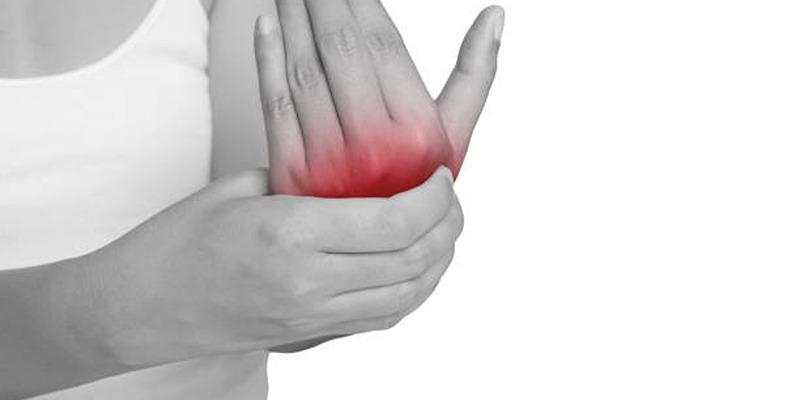Muscle Strain Causes and How to Prevent Common Muscle Injuries
Advertisement
A pulled muscle represents a medical condition referred to as muscle strain which develops when excessive force causes muscles either to tear or extend too far beyond their protective capacity. This medical condition generates discomfort together with inflammation while reducing physical flexibility which results in disturbances during everyday functions or athletic abilities. Athletes often experience muscle strain for which anybody is at risk when moving abruptly or exceeding muscle capacity or failing to adequately prepare their muscles for exercise.
What Is A Muscle Strain?
 A muscle strain happens because overstretching or tearing occurs to muscle fibers from either excessive force or repeated use. The severity of this injury rates from basic discomfort to intense discomfort which damages strength functions along with producing mobility limitations. A muscle strain develops suddenly when someone moves suddenly or builds up because of long-term repetitive stress.
A muscle strain happens because overstretching or tearing occurs to muscle fibers from either excessive force or repeated use. The severity of this injury rates from basic discomfort to intense discomfort which damages strength functions along with producing mobility limitations. A muscle strain develops suddenly when someone moves suddenly or builds up because of long-term repetitive stress.
Muscle strains are classified into three categories based on severity:
- Grade 1 (Mild Strain): Involves minimal stretching or tearing of muscle fibers, causing mild discomfort and stiffness. There is no significant loss of strength or mobility.
- Grade 2 (Moderate Strain): More muscle fibers are damaged, leading to swelling, pain, and weakness. Movement becomes limited, and recovery takes longer.
- Grade 3 (Severe Strain): A complete tear of the muscle or tendon, often accompanied by severe pain, swelling, and the inability to move the affected area. This type of strain may require medical intervention or surgery.
Common Causes of Muscle Strain
Muscle strains are often caused by excessive stress placed on muscles during physical activity. They commonly occur due to sudden movements, overuse, or improper technique during exercise or daily tasks.
Sudden Overstretching
Muscles are designed to contract and stretch within a normal range. However, when they are forced beyond their limit too quickly, muscle fibers can tear. This commonly happens during high-intensity activities such as sprinting, jumping, or lifting heavy weights without proper preparation. Sports like soccer, basketball, and tennis involve sudden movements that increase the risk of overstretching muscles.
Lack of Proper Warm-up
A warm-up session before exercise is essential to prepare muscles for physical activity. When muscles are cold and stiff, they are more prone to injury. Warming up increases blood flow to muscles, making them more flexible and less likely to strain. Skipping a warm-up or stretching improperly can significantly increase the chances of muscle strain.
Repetitive Movements and Overuse
Overuse of muscles through repetitive activities can lead to strain over time. This is common in occupations or sports that require repetitive motions, such as running, swimming, or lifting objects frequently. Overuse injuries often develop gradually, causing persistent pain and discomfort.
For example, runners who suddenly increase their mileage without adequate rest may experience muscle strain in their legs due to excessive stress. Similarly, individuals who perform repetitive lifting tasks at work may strain their back or shoulder muscles.
Weak or Tight Muscles
Muscles that are weak or not properly conditioned are more likely to strain under pressure. Strengthening exercises help improve muscle endurance, reducing the risk of injury. On the other hand, tight muscles lack flexibility, making them more prone to tearing when stretched suddenly. Regular stretching and flexibility exercises can help keep muscles balanced and prevent strain.
Poor Posture and Incorrect Form
Using improper posture or technique while exercising, lifting, or even sitting for extended periods can put unnecessary strain on muscles. For example, lifting a heavy object with the back instead of the legs can cause lower back strain. Maintaining correct posture while sitting, standing, and exercising helps distribute stress evenly across muscles, reducing the risk of injury.
Sudden Increase in Physical Activity
Increasing the intensity, duration, or frequency of physical activity too quickly can overload muscles, leading to strain. It is important to progress gradually to allow muscles to adapt and strengthen. Sudden increases in weightlifting intensity, running distance, or exercise frequency can cause excessive muscle stress and lead to injuries.
Fatigue and Muscle Weakness
Fatigued muscles lose their ability to contract and relax properly, making them more vulnerable to strain. When muscles are overworked and not given enough time to recover, they become weaker and less efficient in handling stress. Fatigue also reduces coordination and reaction time, increasing the likelihood of muscle strain.
Accidents and Falls
Unexpected accidents, such as slipping, tripping, or falling, can cause muscles to stretch abruptly, leading to strain. Quick and uncontrolled movements put excessive force on muscles, increasing the risk of tearing. Engaging in activities with proper balance and awareness can help reduce accidental injuries.
Symptoms of Muscle Strain
The symptoms of muscle strain depend on the severity of the injury. Common signs include:
- Sudden sharp pain during movement
- Swelling and tenderness in the affected area
- Muscle stiffness or tightness
- Bruising around the strained muscle
- Weakness or difficulty using the muscle
- A popping or snapping sensation in severe cases
In mild strains, symptoms may improve with rest and home treatment. However, moderate to severe strains can take longer to heal and may require medical attention.
How to Prevent Muscle Strain
Preventing muscle strain involves adopting practices that reduce stress on your muscles and improve their strength and flexibility.
Warm Up and Stretch Properly
Before engaging in any physical activity, it is important to warm up and stretch. Warming up increases blood circulation to muscles, making them more flexible and less prone to injury. Dynamic stretching exercises, such as leg swings and arm circles, help prepare muscles for movement.
Strengthen Muscles Through Regular Exercise
Building muscle strength through resistance training can reduce the risk of strain. Stronger muscles are better equipped to handle stress and sudden movements. Exercises such as squats, lunges, and core workouts help improve muscle endurance and stability.
Maintain Good Flexibility
Regular stretching improves flexibility, allowing muscles to move through their full range of motion without strain. Yoga and mobility exercises help keep muscles supple and prevent tightness. Stretching should be part of both warm-up and cool-down routines.
Use Proper Technique and Posture
Using the right technique during exercises, sports, and daily activities can prevent unnecessary muscle strain. When lifting heavy objects, always bend the knees and keep the back straight to reduce stress on the lower back. Avoid sudden, jerky movements that can overstretch muscles.
Stay Hydrated and Eat a Balanced Diet
Dehydration can lead to muscle cramps and stiffness, making muscles more susceptible to strain. Drinking enough water and consuming a balanced diet with protein, vitamins, and minerals helps maintain muscle health and aids recovery.
How to Treat a Muscle Strain
 Treating a muscle strain effectively requires a combination of rest, care, and proper techniques to promote healing and prevent further injury.
Treating a muscle strain effectively requires a combination of rest, care, and proper techniques to promote healing and prevent further injury.
Rest and Protect the Muscle
Avoid putting pressure on the strained muscle to prevent further damage. Resting allows the muscle to heal properly.
Use Compression for Support
Wrapping the injured muscle with an elastic bandage can help control swelling and provide support. However, avoid wrapping it too tightly, as this can restrict blood flow.
Take Pain Relievers If Needed
Non-prescription pain relievers, such as ibuprofen or acetaminophen, can effectively reduce pain and inflammation. Always use them as directed and seek medical advice if needed.
Perform Gentle Stretching and Rehabilitation
Once the pain subsides, gentle stretching and strengthening exercises can help restore flexibility and prevent stiffness. Gradually return to activity to avoid re-injury.
Conclusion
Muscle strain is a common injury that can be prevented with proper warm-ups, strength training, and good posture. By understanding its causes, you can take proactive steps to protect your muscles and recover faster if an injury occurs. Regular exercise, hydration, and balanced nutrition play a key role in keeping muscles strong and flexible.
On this page
What Is A Muscle Strain? Common Causes of Muscle Strain Sudden Overstretching Lack of Proper Warm-up Repetitive Movements and Overuse Weak or Tight Muscles Poor Posture and Incorrect Form Sudden Increase in Physical Activity Fatigue and Muscle Weakness Accidents and Falls Symptoms of Muscle Strain How to Prevent Muscle Strain Warm Up and Stretch Properly Strengthen Muscles Through Regular Exercise Maintain Good Flexibility Use Proper Technique and Posture Stay Hydrated and Eat a Balanced Diet How to Treat a Muscle Strain Rest and Protect the Muscle Use Compression for Support Take Pain Relievers If Needed Perform Gentle Stretching and Rehabilitation ConclusionAdvertisement












